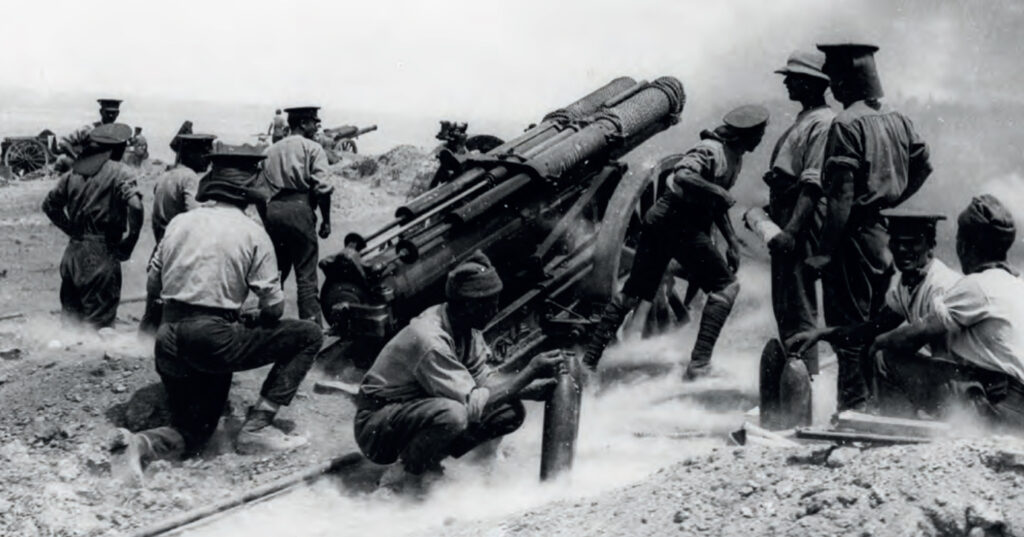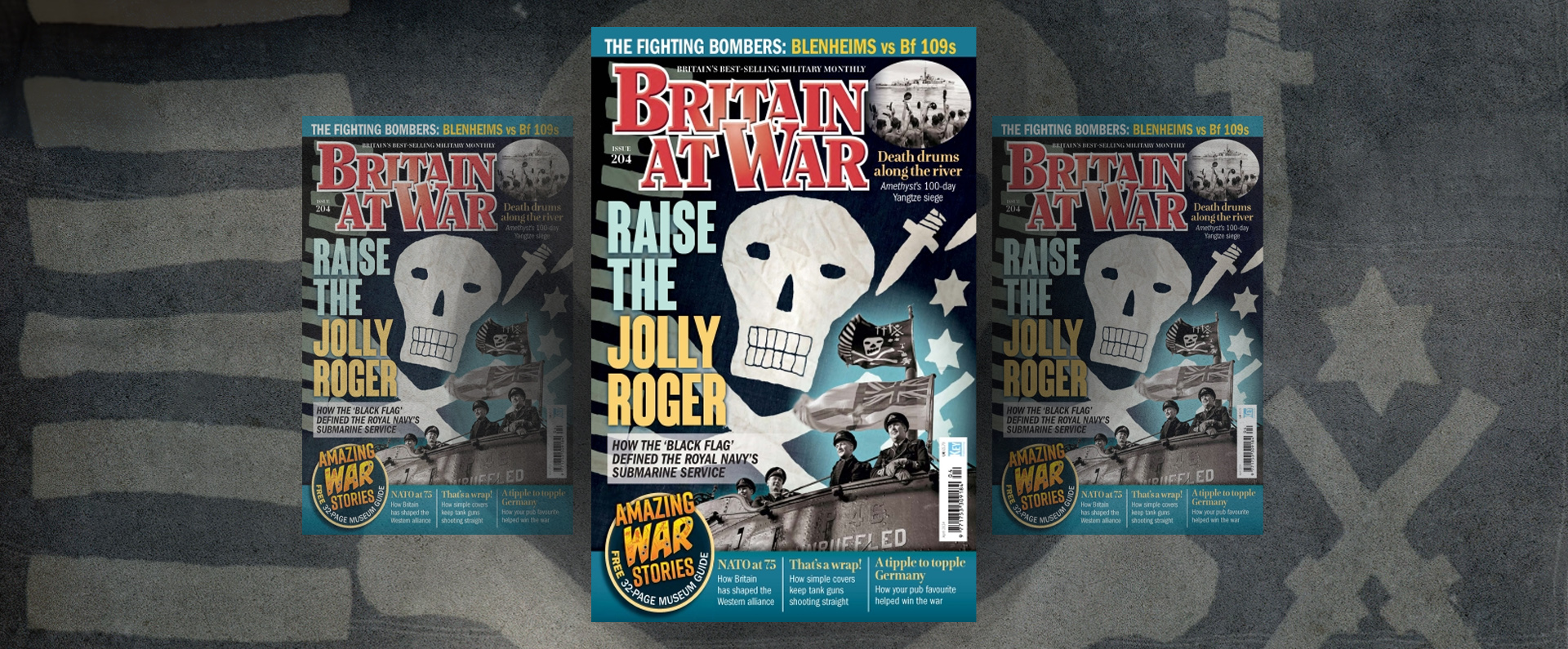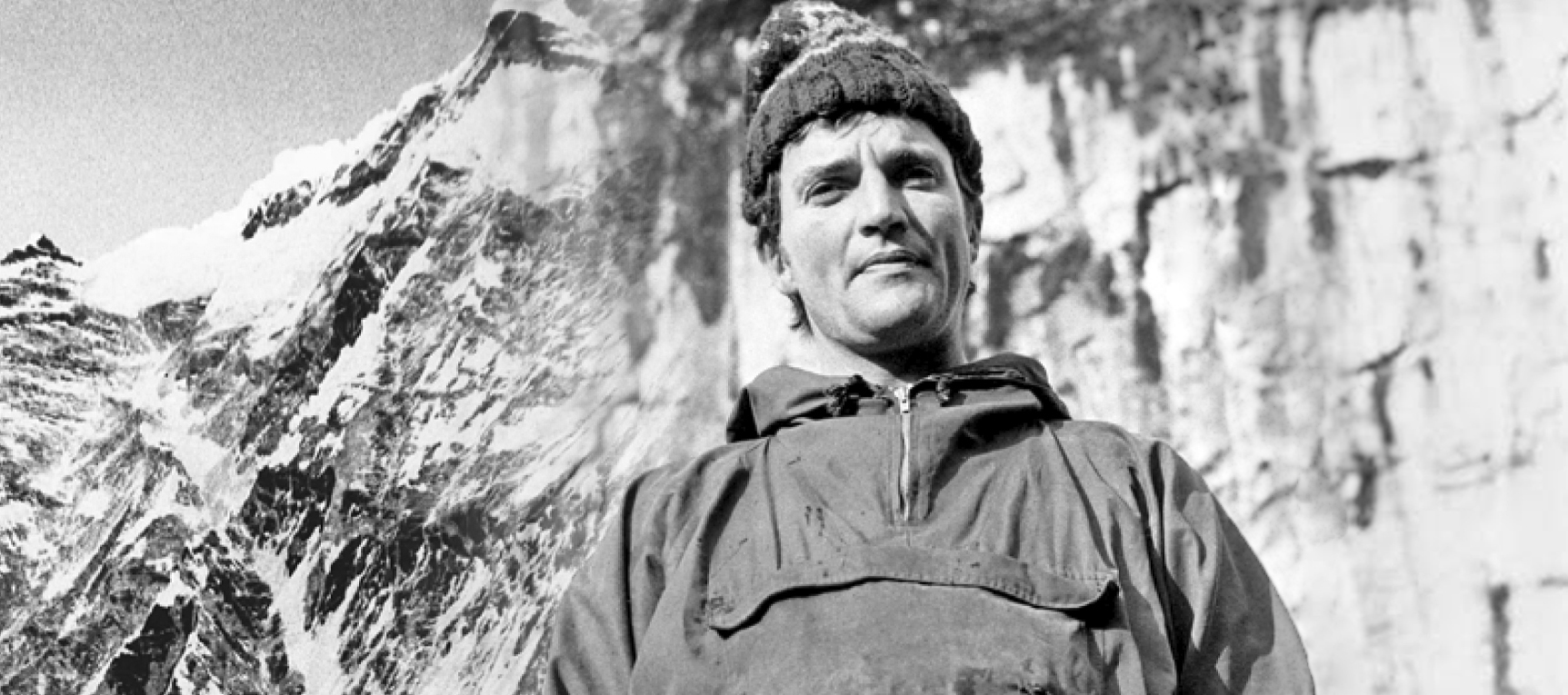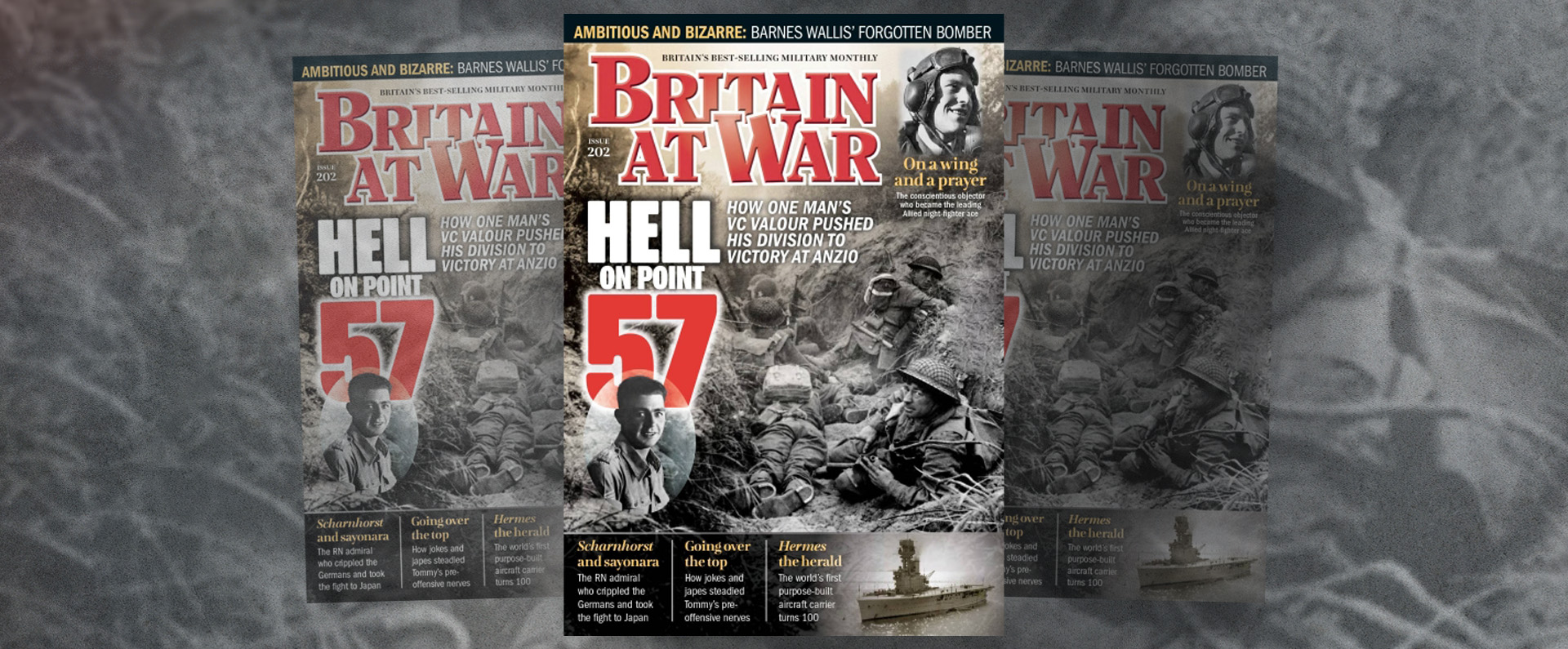
Published in Britain at War in January 2020.
Staff Sergeant William Cosgrove VC
William Cosgrove, a mountain of a man, was decorated with the Victoria Cross (VC) for quite outstanding gallantry – not to mention incredible strength – during the Gallipoli landings. Sadly, he paid a heavy price for his courage in later life.
Born in Ballinookera, near the fishing village of Aghada, Co Cork, Ireland, on 1 October 1888, he was one of five sons. His parents were Michael Cosgrove, a local farmer, and his wife, Mary (née Morrissey).
At one point, Michael Cosgrove left his wife and children at home and travelled to Australia to seek work but he later returned to Ireland after the death, aged just thirteen, of his only daughter, Mary Catherine, who had contracted tuberculosis after a fall from her pony.
William Cosgrove attended Ballinrostig School before becoming an apprentice butcher at Whitegate, on the edge of Cork harbour. Meanwhile, three of his four brothers travelled to the United States in search of work and better opportunities at a time when Ireland was suffering from acute economic hardship.
As a young butcher, Cosgrove delivered meat to Fort Carlisle army camp and this appears to have given him an interest in the military. In 1910, the quiet, shy young man enlisted into the Royal Munster Fusiliers. He served with his regiment in India and Burma but, after the outbreak of the First World War in August 1914, his unit returned to the UK in January 1915.
In March of that year, his Coventry-based battalion was dispatched to the Dardanelles. On 25 April, the troops began landing at V beach near Cape Helles, Gallipoli, in the face of a murderous enemy fire. During a fierce two-day battle, his battalion took some 600 casualties: killed, missing and wounded.
Cosgrove, then twenty-six, standing six foot six tall and weighing sixteen stone, was awarded his VC for bravery on 26 April. The man known affectionately as the “East Cork Giant” led his section in an attack on the Turkish positions. When they were stopped by six-feet high posts and thick barbed wire, Cosgrove used his formidable frame and great strength to help his men break through. Using his bare hands – under a galling fire – he tore down the fence-posts.
The London Gazette of 23 August 1915 stated: “For most conspicuous bravery in the leading of his section with great dash during our attack from the beach to the east of Cape Helles, on the Turkish positions, on 26th April, 1915.
“Corporal Cosgrove on this occasion pulled down the posts of the enemy’s high wire entanglements single-handed, notwithstanding a terrific fire from both front and flanks, thereby greatly contributing to the successful clearing of the heights.’”
Cosgrove was severely wounded in the action and was evacuated to hospital, where he eventually underwent two operations. Later, he spent time recuperating in the UK and, later, Ireland. Cosgrove, who was a colourful character with a delightful turn of phrase, later described how he was well aware of the dangers that he faced after he and his comrades were tasked with cutting their way through the enemy wire.
He said: “I thought, when I heard the work I was detailed for, that I would never again have the opportunity of a day’s fighting. However, the work was there; it had to be done, for on its success rested the safety of many men, as well as the opportunity it would afford them of helping to throw back the Turks.
“Our job was to dash ahead, face the trenches bristling with rifles and machine guns, and destroy the wire entanglements – that is, to cut them here and there with our pliers. Fifty men were detailed for the work; poor Sergeant Major Bennett led us, but just as we made the dash – oh, such a storm of lead was concentrated on us, for the Turks knew of our intention.
“Our Sergeant Major was killed – a bullet through the brain. I then took charge; shouted to the boys to come on. From the village near at hand there came a terrible fire to swell the murderous hail of bullets from the trenches. In the village they fired from doors and windows, and from that advantage they could comfortably take aim.
“The dash was quite 100 yards, and I don’t know whether I ran or prayed the faster – I wanted to try and succeed in my work, and I also wanted to have the benefit of dying with a prayer in my mind. I can tell you it is not fortunately given to everyone to note the incidents that seem to be the last in your life, and you [are] never feeling better or stronger.
“Well, some of us got close up to the wire and we started to cut it with pliers. You might as well try and snip Cloyne Round Tower with a lady’s scissors, and you would not hurt yourself either. The wire was of great strength, strained as tight as fiddle-string, and so full of spikes and thorns that you could not get the cutters between.
“’Heavens,’ said I, ‘we’re done’; a moment later I threw the pliers from me. ‘Pull them [the posts] up,’ I roared. ‘Put your arms around them and pull them out of the ground.’ I dashed at the first one; heaved and strained, and then it came out into my arms; and same as you’d lift a child. I believe there was wild cheering when they saw what I was at, but I only heard the screech of the bullets and saw dust rising all around from where they hit.
‘I could not tell how many I pulled up. I did my best, and the boys that were left with me were every bit as good as myself, and I do wish they all got some recognition. When the wire was down the rest of the lads came on like ‘devils’, and not withstanding the pulverising fire, they reached the trenches. They met a brave honourable foe in the Turks, and I am sorry that such decent fighting men were brought into the row by such dirty tricksters as the Germans. They gave us great resistance, but we got to their trenches, and won about 200 yards length by 20 yards deep, and 700 yards from the shore…”
Cosgrove was wounded in the fighting later in the day as he recalled with apparent relish: ‘A machine gun sent some bullets into me, and strange, I was wounded before I reached the trench, though I did not realise it. When I got to the trench I did my own part, and later collapsed. One of the bullets struck me in the side, and passed clean through me. It struck the left hook of my tunic, then entered my body, took a couple of splinters off my backbone, but of course did not injure the spinal column, and passed out on my right side, knocking off the other belt hook. I was taken up feeling pretty bad, when I came to my senses, and considered seriously wounded. I was removed to Malta Hospital, where there were two operations performed, and the splinters of my backbone removed. I was about sixteen stone weight at the Dardanelles, but I am now down in weight but not too used up…”
Although Cosgrove was keen that his comrades were given credit for their bravery, there was no doubt that he had led the way and that the combination of his courage and his sheer power had made him a truly formidable adversary in battle. Burrowes Kelly, the ship’s surgeon, wrote in his diary: “The manner in which the man worked out in the open will never be forgotten by those who were fortunate enough to witness it.” Many others, both on shore and aboard the River Clyde, also witnessed the full extent of Cosgrove’s gallantry and strength.
Cosgrove’s VC was announced on 23 August 1915, two months after those awarded to two other soldiers, Lieutenant-Colonel Charles Doughty-Wylie and Captain Garth Walford, for their bravery in the vicinity of V Beach.
Cosgrove’s award had been prompted by a recommendation from Second Lieutenant H.A. Brown, of the 1st Royal Munster Fusiliers, that a “most conspicuous act of bravery” had been displayed. He said of Cosgrove: “I personally consider he deserves the height of praise for such a courageous act and was much impressed to see him though wounded in the back leading his section shortly before the enemy were driven from their trenches and the fort captured.”
Cosgrove never fully recovered from his injuries because not all the shrapnel was removed from his back during the two operations in Malta. He was promoted to sergeant in 1915 and took part in recruiting in Ireland. He received his VC from George V in an investiture at Buckingham Place on 4 November 1916.
In 1922 the Royal Munster Fusiliers were disbanded (following the creation of the Irish Free State) and Cosgrove transferred to the Royal Northumberland Fusiliers. In 1928, he transferred to the 6th (Burma) Battalion, University Training Corps, based in Rangoon, Burma.
Cosgrove was an expert shot despite his injuries and in two successive years he helped the Rangoon Training Corps to third place in the Imperial Universities’ Shoot. In 1934, Cosgrove retired as a staff sergeant instructor after twenty-four years’ service. As a result of his VC, Cosgrove was often the centre of attention, although he was a shy man who never wanted any fuss made of him.
After his retirement, Cosgrove, who never married, suffered from serious ill health. The splinters of shrapnel left in his back were painful and were slowly killing him. He was treated at the military wing of Millbank General Hospital in London for his injuries, including serious muscle shrinkage, but he died there, with his brother Joseph at his bedside, on 14 July 1936, aged forty-seven.
In recognition of his outstanding career, Cosgrove was given a special send-off. On 17 July, his remains were brought into Cork Harbour on SS Innisfallen and 300 members of the Munster Comrades Association formed a guard of honour. Finally, later that day, some of his former comrades shouldered his coffin to the family burial ground in Upper Aghada. A bugler played “The Last Post” and one of the wreaths, from the Leinster Regiment Old Comrades Association, bore an inscription that read: “In Loving Remembrance of a great Irish soldier.”
Download a PDF of the original Britain at War article
For more information, visit:
LordAshcroftOnBravery.com


